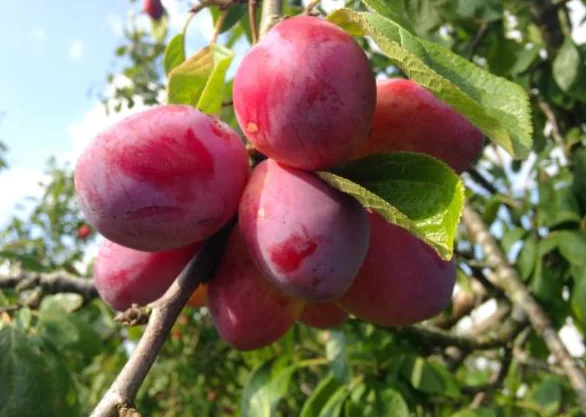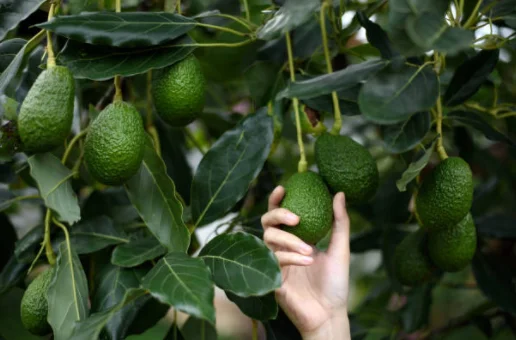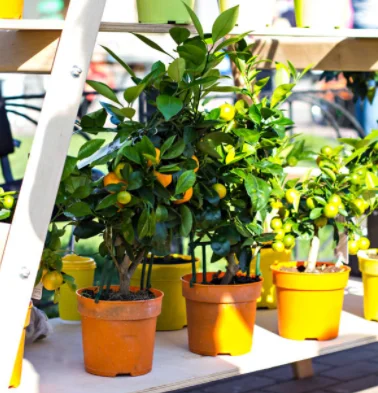Most fruit trees, like dwarf fruit trees, can be pruned to stay small with branches at a low height to pick fruit.
Dwarf fruit trees can be bought at a local nursery on a stock that will grow to the following sizes: dwarf, semi-dwarf, and standard.
Recently, I had bought an apple tree dwarf rootstock and planted it deeper than suggested and the apple tree grew to standard size.
The suggestion from a nursery worker was that a standard tree can also be pruned to a “dwarf” size. It will just have a thicker trunk. Shaded areas in the yard also impact a tree’s size and will keep it smaller.
Dwart fruit Trees can be distinguished based on identical factors like their support, height, and rootstock.
The dwarf fruit trees and the miniature fruit trees are both relatively smaller in size. However, they have different rootstocks’. Their stump or part of the roots are used for grafting or cutting another plant.
This is done in order to maintain their significant sizes, also varying with the fruit trees’ height and need for support.
A regular dwarf fruit tree normally grows to a height of 8–10 feet; however, a miniature fruit tree remains between 6 and 8 feet.
As we all know, dwarf fruit trees as a whole usually produce regular-sized, bearing fruits.
However, potted dwarf fruit trees, on the other hand, in cold regions require little attention, unlike zones that have warmer climates.
The ideal way to control your tree size is branch pruning for dwarfs in the pots and direct soil.
Popular Dwarf Fruit Trees To Grow In The Yard
Here is a shortlist of seven popular dwarf fruit trees to grow in the backyard or with limited space, as follows:
Related: 10 Fruit Trees That Take The Longest To Grow
1) DWARF CHERRY TREE
Dwarf cherry trees will grow easily in the pots and produce quite a number of quality fruits if care is taken properly.
These types of fruit trees are sometimes unable to bear fruit if two-year-old branches are not there.
However, it is also important to know that all the varieties cannot thrive well in pots.
Dwarf cherry trees need temperatures below 45 degrees F and are preferably grown in sandy loam soil. Sweet dwarf cherry trees, and the large ones, can give about 10–15 quarts of fruit each year.
Also, well-drained soil with enough sunlight could be a considerable source for fruit production.
They should be spaced on each dwarfed rootstock about 5–10 feet apart. The potting size should be large for such trees, at least 18 inches wide.
2) DWARF APPLE TREE
Did you know that the dwarf apple tree is a tough tree type that can withstand freezing temperatures of up to 45 degrees or less?
Yes, these types of apple trees grow in assorted conditions in small spaces and can take around three years.
Most of the time, these types of apple trees thrive best in drier soil and a drier or warmer climate. With the right care, you will receive quality apples all year round, so if there is a drenched climate in your zone, then these types of apple trees will need constant drainage.
Nonetheless, smaller fruit trees, such as dwarf apple trees, estimate less production of apples when the trees are typically about 3–4 feet tall.
These size trees may yield an average of 45–50 apples in variety. The popular varieties are known as Fuji and Red Delicious, and of course, the common rootstocks are known as Malling or Cornell-Geneva.
Growing them in pots is helpful in dwarfing the plants; the pot size should be at least 16–18 inches or more.
3) DWARF AVOCADO TREE
This type of Avocado dwarf fruit tree is ideal for backyards because it bears fruit throughout the year. However, it is not able to deal with temperatures below freezing.
If sunshine is moderate, then it can take below 30 degrees F indoors, varying to harvest in the summer or winter season, but it all depends upon tree type.
A regular Avocado growing fruit tree can reach 10–12 feet tall, producing fruits in 1-3 years. Not to mention that avocado trees demand sandy loam and are able to withstand alkaline soil too.
However, the dwarf varieties can grow around 3–4 feet tall and enjoy a full to moderate sun temperature and for the cold season, it can handle temperatures around 28 degrees F. Larger pots are more likely to produce quality ones of about 20+ gallons.
4) DWARF PEAR TREE
Did you know there were dwarf pear trees? Yes, pears dwarf are considered the largest of such varieties, pruning in early spring or winter.
This type of small dwarf tree does well in slightly rich acidic soil with a pH of 6.0 or 6.5, along with lots of sunlight.
These fruit trees are spaced approximately 8 feet apart and semi-dwarf at 13 feet apart. Dwarf pear fruit trees are winter-friendly trees too. can withstand cool temperatures of about -25 degrees F.
The container size for these types of trees should be deep, with a minimum of 24 inches. Popular rootstocks for dwarf pear trees include EMH, Quince A, and Quince C.
5) DWARF APRICOT TREE
Apricot dwarf varieties of these types can produce many fruits when grown in a container. You start to see blooms during the early spring season.
Apricot trees are strong trees that can cope with winter temperatures of about 20 degrees F. These small fruit trees can be planted any time during the year, except when it is extremely hot.
Even though you need a lot of warmth during the summer, a 2-3-year-old dwarf tree is good to be bought at the right time.
There are also several colors of such trees that could be easily spotted in yards, such as white in the blossoms, bronze foliage, and yellow in the fall.
Apricot is one of the stone fruit trees, like peach, cherry, and nectarine. Each pear of this variety must be spaced 20 feet apart in general and is usually 5–10 feet in height.
6) DWARF ORANGE TREE
Planting fruit trees like these citrus categories, such as lemons and mandarins, is preferably grown in wide pots rather than deep pots as they have a shallow root system.
The dwarf orange tree is mostly a potted fruit tree to harvest; it is also ideal for indoor planting conditions.
However, sunlight makes it healthy for the tree to bloom. These small fruit trees grow no more than 3–4 feet tall, while regular varieties can grow 8–12 feet and can self-pollinate with rich soil.
The ideal temperature for dwarf orange trees is 65–45 degrees F during the day and 50–55 degrees F at night. A common rootstock could be trifoliate. Also, a potting size allowing free drainage with a 6–9-inch diameter is suitable for these types of trees.
7) DWARF PLUM TREE
This variety of dwarf plum is grafted, not affecting the fruit size produced. The most favorable way to grow this type of dwarf tree is in a container that is about 12 inches in diameter.
This type of dwarf tree needs either less or no pruning, and the spacing should be about 15–20 feet apart. If pruning is required, then only the months of March and September are favorable pruning times.
Sunlight is good for fruiting production, along with well-drained soil. This tree starts production within 3 years at 2m in height and width and is regularly used to make jams.
The common dwarf rootstocks include Pixy or St. Julien A. The soil conditions should be loamy to get the most out of this type of dwarf tree.
So, there you have it—7 of the most popular dwarf trees to grow in the yard or in a container.










